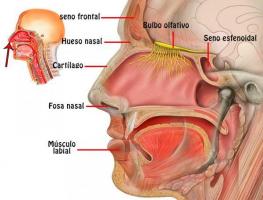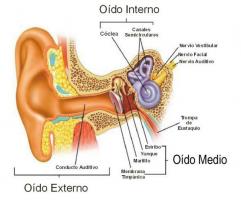The main characteristics of the ANIMAL KINGDOM

Image: Slideshare
In the 1970s, Whittaker invented a way to classify all living things of the planet into five groups or kingdoms. These five kingdoms were: Protista Kingdom, Monera Kingdom, Fungi Kingdom, Plantae Kingdom, and Animalia Kingdom. In this lesson from a TEACHER we will review the main characteristics of the animal kingdom. Broadly speaking, the kingdom of animals or metazoans includes eukaryotic, heterotrophic, multicellular organisms and with ability to produce fabrics but in addition to these, they have other interesting characteristics that we will discover later continuation. If you want to know more about the general characteristics of the animal kingdom, keep reading!
Index
- Animals at the cellular level: eukaryotic and multicellular
- Feeding the animals
- Animal respiration
- Transport of substances within animals: circulation
- Elimination of toxic substances: excretion
- Animals and their response capabilities
- Animals and their movement
- Reproduction of animals
Animals at the cellular level: eukaryotic and multicellular.
The first characteristics of the animal kingdom that must be highlighted is that they are eukaryotic and multicellular organisms.
Unlike prokaryotic cells that we can find in bacteria, for example, cells eukaryotes they are well compartmentalized and organized units, in which we can find different organelles with different functionsWhile the nucleus is responsible for protecting the genetic material of the cell, the mitochondria generate energy, etc. This compartmentalization, similar to what is done in factories and offices, makes the cell more efficient and the organism, as a whole, larger and biologically effective. If you want to know more about the differences between prokaryotic cells and eukaryotic cells, ¡¡take a look at this lesson!
Unlike organisms from other kingdoms like the protists, the animals are multicellular. In other words, animals are capable of multiplying their cells and that each one of them performs an essential function within the animal as a whole. Just as the nucleus is in charge, within the cell, of take care of DNA, animals generate different cells specifically responsible for storing DNA and passing it on to the next generation: eggs and sperm. Furthermore, in most animals except poriferous (sea sponges) the cells are capable of grouping, according to their function, to form fabrics.
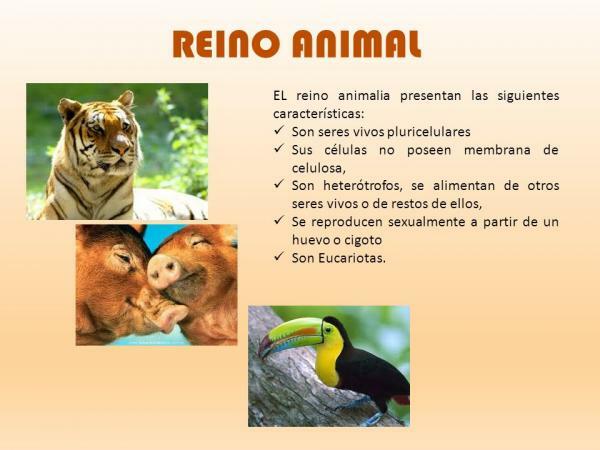
Image: Slideplayer
The feeding of the animals.
In addition to the characteristics of their cells, animals are characterized by havingr five activities or functions essential that develop throughout their life or part of it: feeding, respiration, circulation, excretion, response, movement and reproduction.
Animals, unlike other organisms are heterotrophs by ingestion. That is, animals are not capable of generating their food from inorganic material, water and sunlight such as plants or algae, but they have to acquire it from other living beings. In addition, animals cannot absorb food as, for example, fungi do, which release to the environment where a series of substances live that "melt" the organic matter of other living beings and then the absorb. Animals have to introduce other living beings into their bodies and carry out digestion, the transport of these molecules through the body and the excretion of substances that they cannot use.
Different animals have evolved to eat in different ways:
- The herbivoreseat vegetables (leaves, fruits, etc.)
- The carnivoresthey eat other animals
- The omnivoresthey feed on both plants and animals
- The detritivores they eat decomposing plant and animal material, etc.
A special type of diet is that made by parasites, that lives and feeds on another living being (host), damaging it but not causing its death. The death of the host would leave him homeless and without food and only occurs when he is already very weak or there are a large number of parasites feeding on the same individual.
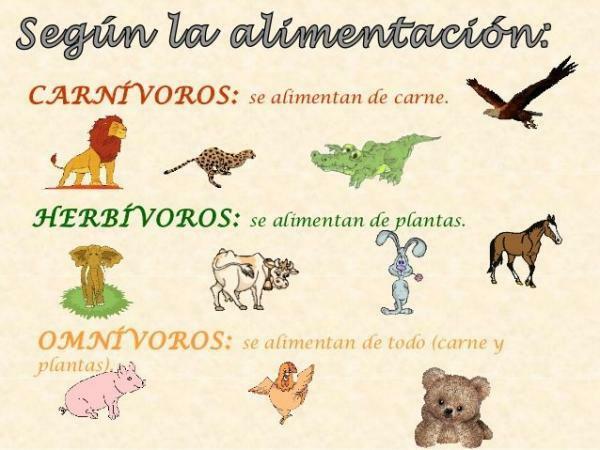
The respiration of animals.
Another characteristic of the animal kingdom is respiration. All animals, run, swim or fly, breathe. The breathing It is the process by which individuals take oxygen from the environment around them and release carbon dioxide.
Depending on the complexity and size of the animal, respiration takes place in different ways. In smaller animals and, in general, aquatic animals, oxygen can simply pass through their skin ( diffusion). In most cases, animals have to develop more complex structures and systems to catch and transport these gases: different types of gills, lungs, orifices and ducts according to the environment in which they live and their characteristics.
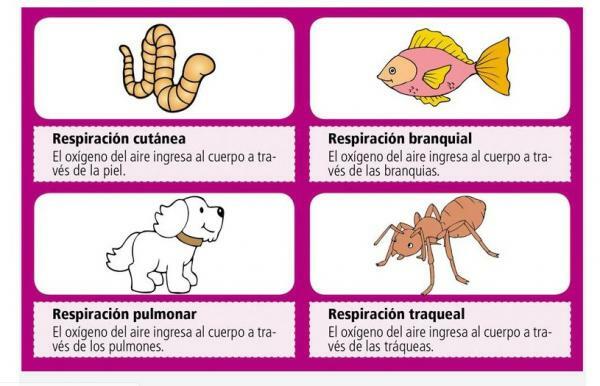
Image: ABC Color
The transport of substances within animals: circulation.
Once introduced into the body, food, water, and oxygen have to be carried inside the body of the organism. The transport of substances is done mainly through circulation or the circulatory system.
In simpler organisms such as worms, transport is done as oxygen input, through diffusion since substances move from where more substance exists to where less. In contrast, in more complex and developed animals, there are more complex systems, cells and substances for transport: ducts, organs with different valves, large and complex molecules, etc.
An example is the circulatory system of human beings, made up of the heart, veins, arteries, etc. and through which hemoglobin circulates, an enormously complicated molecule.
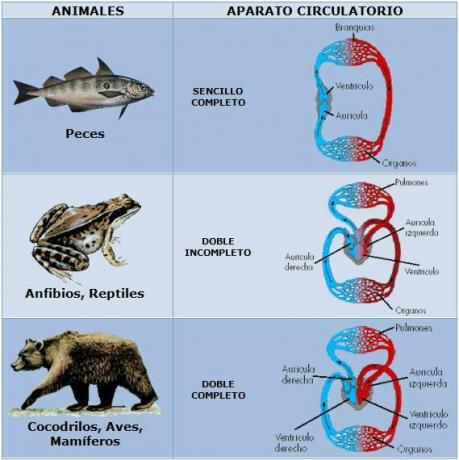
Image: Circulation in animals
Elimination of toxic substances: excretion.
Continuing with the main characteristics of the animal kingdom, we will now talk about the function of excretion. In animals, the digestion of food can lead to the production of substances and molecules that are of no use to the body. Some of them, such as ammonia, can even be toxic and harmful to the individual and, if they accumulate, they can lead to death. The maintenance of certain conditions that allow the life of the individual is called homeostasis.
To remove these substances, the animal body creates separate mechanisms and circuits, through which the substances travel to exit holes that remove it from the body. Egress by diffusion is usually more difficult and slow, so all animals have specific mechanisms for which remove ammonia directly and quickly to the environment or they transform them and they drive it out more slowly.

Image: Scientific Contexts
Animals and their response capabilities.
One of the characteristics that most differentiates animals from organisms of other kingdoms is their responsiveness. Animals are capable of receiving stimuli of the environment, understand them and generate a answer chord.
This is because they have a set differentiated and specialized nerve cells such as light receptors, chemicals, etc. and effectors that are capable of causing them to release substances, activate their movement, etc. Normally nerve cells are connected to each other, forming a nervous system ranging from a simple cord to a highly branched system, with the brain as the command system.
Animals and their movement.
All animals have one characteristic in common: they have cells capable of moving. Although the animal is still (sessile) for part or all of its life (like sea sponges) all of them have cellscapable of contracting and expanding, that is, to move.
The existence of mobile cells helps animals to feed, breathe, excrete and for some it allows travel. In some animals, the existence of muscles and skeletons (internal and / or external) means that the animals can move around and create quite characteristic and complex behaviors and routines.
The reproduction of animals.
And we end this lesson with the characteristics of the animal kingdom is reproduction. Finally, animals are organisms capable of breed. There are different types of animal reproduction within the animal kingdom, although most animals are produced sexually by creating gametesand their union in the fertilization.
This type of reproduction has many advantages: it helps to mix the characteristics of different individuals and leads to the appearance of new ones, through the mutations. With this, it leads to the adaptation of animals to their habitat and to evolution through natural selection.
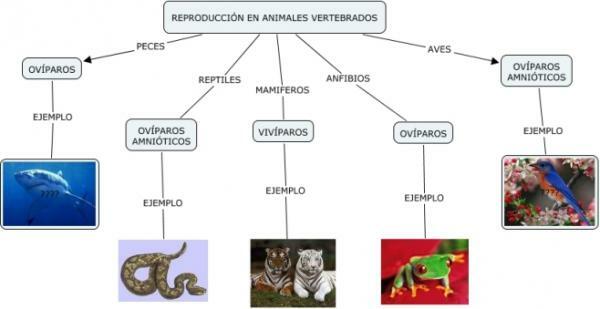
Image: Vertebrate animals
If you want to read more articles similar to Animal kingdom: general characteristics, we recommend that you enter our category of biology.
Bibliography
- Hickman, C. P., Ober, W. C. & Garrison, C. W. 2006. Comprehensive Principles of Zoology, 13th edition. McGraw-Hill-Interamericana, Madrid.
- Storer, Tracy. General Zoology. 6 edition. MC. Graw Hill Book Company, Inc.


